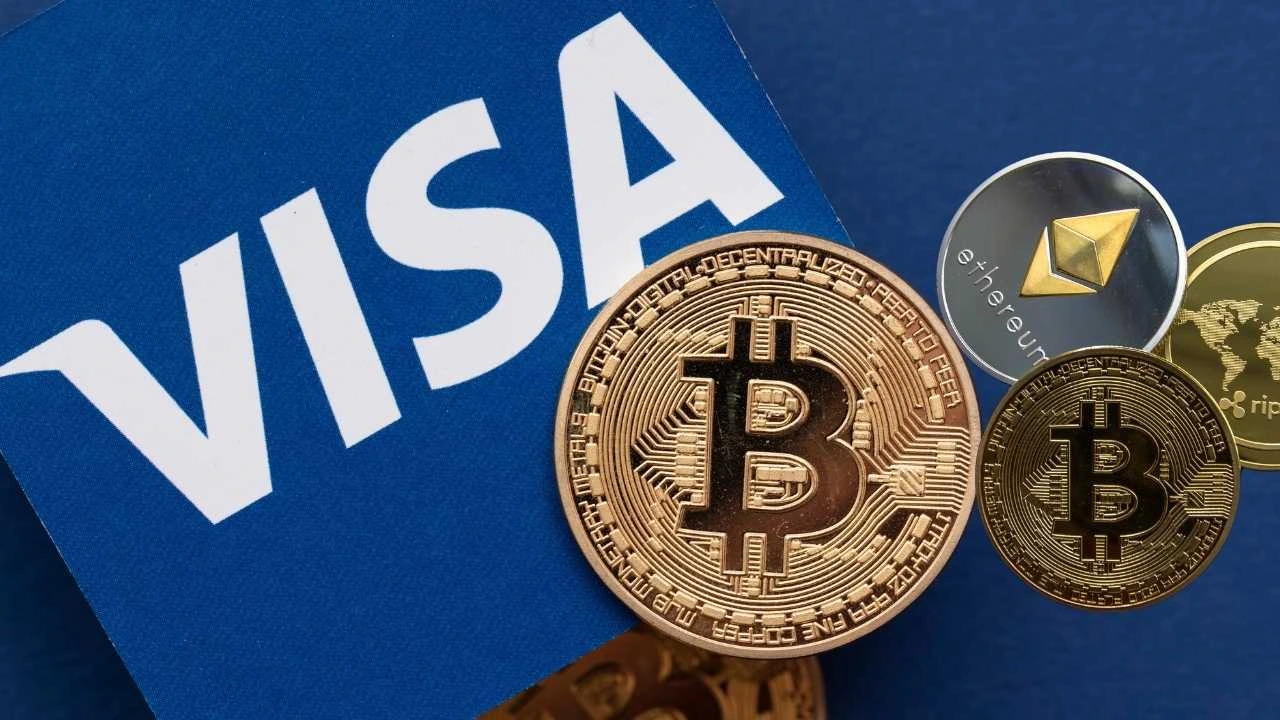According to a Visa report released Oct. 16, stablecoin-denominated lending has quietly become one of the most dynamic growth engines in decentralized finance (DeFi).
The study found that on-chain loans totaling $670 billion have been issued over the last five years — with $51.7 billion recorded in August 2025 alone — underscoring the rapid acceleration of blockchain-based credit markets.
“On-chain lending reimagines financial services by using smart contracts to automate and facilitate intermediation instead of traditional institutions,” Visa said.
This new lending ecosystem operates without borders or banking hours. Using stablecoins as the settlement layer, it enables instant, fiat-linked liquidity while providing transparency and programmable interest rates — all governed by algorithms rather than middlemen.
How Smart Contracts and Stablecoins Redefine Lending
| Feature | Traditional Lending | On-Chain Lending with Stablecoins |
|---|---|---|
| Intermediation | Centralized banks or lenders | Automated smart contracts |
| Interest Rate Setting | Set by banks/regulators | Adjusted algorithmically via supply-demand |
| Settlement | Delayed (1–3 business days) | Near-instant via blockchain |
| Accessibility | Limited by geography & credit scores | Global, open to anyone with internet access |
| Transparency | Opaque pricing | Fully transparent transaction data |
| Collateral | Fiat or assets held in custody | Crypto and tokenized real-world assets |
Visa described stablecoins as “the infrastructure powering a new lending space”, offering fiat-equivalent stability while preserving the programmability of digital assets.
Visa’s Outlook: Tokenized Collateral and On-Chain Identity
Looking ahead, Visa forecasts a decade of transformation in digital credit markets.
Key trends highlighted in the report include:
- Tokenized Traditional Assets – Stocks, bonds, and other real-world assets will become blockchain collateral, unlocking multi-trillion-dollar lending pools.
- Crypto-Backed Credit Programs – Borrowers will increasingly use crypto holdings to secure fiat-equivalent credit lines.
- On-Chain Identity Verification – Advances in decentralized identity (DID) will enable under-collateralized lending at scale, a step toward mainstream credit models.
- AI-Driven Risk Models – As Visa and partners integrate on-chain analytics with AI, predictive scoring will replace legacy risk evaluations.
“As on-chain finance evolves to serve more traditional use cases, Visa is committed to helping our partners navigate this transformation and seize the opportunities it presents,” the company said.
The Rise of Stablecoin-Centric Finance
Visa’s report comes amid a broader resurgence of digital-asset lending. After the 2022 “crypto winter,” capital flows are returning to blockchain credit platforms — this time anchored in compliance, stability, and fiat interoperability rather than speculative leverage.
Visa CEO Ryan McInerney noted during the company’s July 29 earnings call that stablecoin innovation is a top strategic focus:
“We are piloting and partnering with stablecoin companies as we build out our settlement stack,” McInerney said. “We’re helping banks issue their own stablecoins and realize the benefits of programmable money.”
These comments signal Visa’s shift from payment rails to full-fledged on-chain financial infrastructure, supporting everything from treasury management to global settlements.
On-Chain Lending: Efficiency Meets Transparency
Visa’s researchers argue that blockchain credit systems compress the traditional financial stack — automating rate adjustments, loan servicing, and settlement in real time.
Smart contracts dynamically match borrowers and lenders, rebalance pools, and trigger liquidations without manual oversight. This structure allows capital to circulate continuously, reducing idle liquidity and increasing market efficiency.
“Stablecoin-denominated products enable new ways to lend and borrow with automated execution, near-instantaneous settlement and borderless capital flows — essentially creating a global credit market that never closes,” Visa wrote.
Implications for Traditional Finance
The global credit system — a $300 trillion market — still depends heavily on intermediaries. But as Visa’s report suggests, on-chain finance could eventually handle a measurable share of short-term liquidity, trade finance, and corporate credit flows.
Financial institutions are already exploring tokenized collateral as a risk management and funding tool, with Visa offering consulting services covering:
- Market and competitive analysis
- On-chain finance strategy
- Custody frameworks
- Stablecoin and treasury integration
By treating stablecoins as programmable financial instruments, Visa aims to close the gap between DeFi innovation and institutional adoption.
Market Snapshot: The Scale of On-Chain Lending
| Metric (2020–2025) | Value / Trend |
|---|---|
| Total On-Chain Loans | $670 billion |
| August 2025 Lending Volume | $51.7 billion |
| Annualized Growth (2020–2025) | 80%+ |
| Primary Denominations | USDC, USDT, DAI |
| Top Sectors | DeFi lending, trade finance, cross-border liquidity |
| Top Use Cases Emerging | Collateralized credit, tokenized asset lending, on-chain repo markets |
Why This Matters?
Visa’s research reframes the stablecoin conversation. Once viewed merely as a crypto-payment utility, stablecoins are now functioning as capital-market instruments — the backbone of a global, continuous, digital credit ecosystem.
If Visa’s projections hold, tokenized lending and settlement could reshape how liquidity moves across borders, how banks structure credit risk, and how institutions manage collateral in real time.
FAQs
1. What is on-chain lending?
On-chain lending uses blockchain-based smart contracts to match borrowers and lenders directly, automate rate adjustments, and execute settlements instantly without traditional intermediaries.
2. Why are stablecoins central to this market?
Stablecoins offer fiat-equivalent stability while retaining blockchain speed and programmability — making them ideal for automated lending and settlement.
3. How big is the on-chain lending market?
Visa’s report estimates $670 billion in loans over the past five years, with $51.7 billion issued in August 2025 alone.
4. What innovations are expected next?
Visa predicts tokenized real-world assets and decentralized identity systems will enable under-collateralized and institutional-grade lending in the next decade.
5. How is Visa participating in on-chain finance?
Visa provides consulting, integration, and treasury solutions to help banks and businesses adopt on-chain technologies and stablecoin infrastructure.

